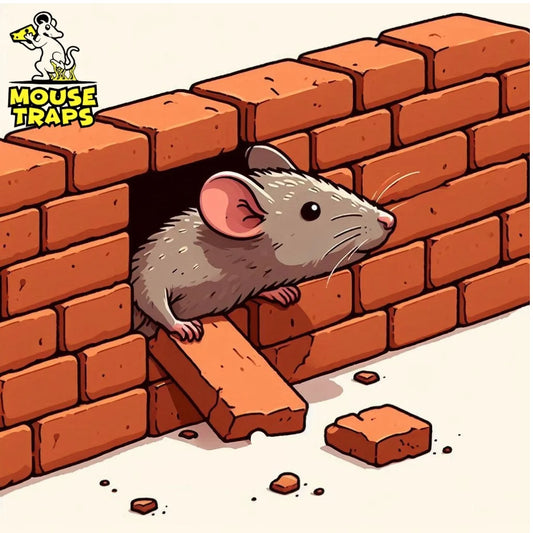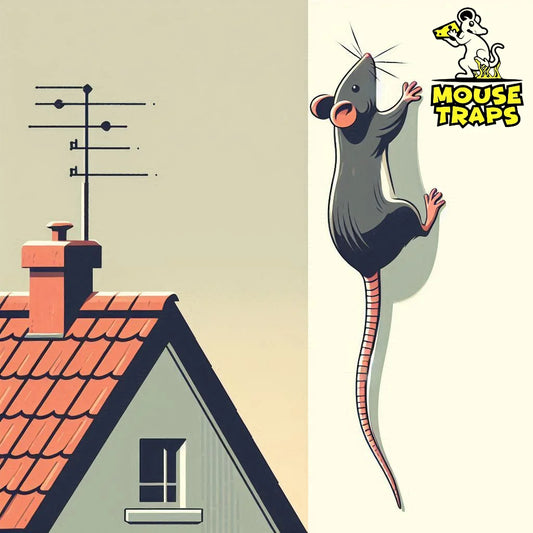Introduction:
Discovering a rat infestation in your rental property can be alarming and stressful. By acting and using approaches you can tackle the issue and bring back a secure and pleasant living space. This guide will walk you through the process of handling a rat problem in your rented home starting from informing your landlord to taking steps, for incidents.
Notify Your Landlord:
- If you see any signs of rats, in your place like droppings chew marks or actually spotting rats get in touch with your landlord or property manager.
- Provide them with specific details about the extent of the problem and any evidence you've observed.

Seal Entry Points:
- Inspect the interior and exterior of the property for any openings that rats could use to enter. Common entry points include gaps around pipes, vents, doors, and windows.
- Make sure to seal off those openings using items such, as steel wool, metal mesh or caulk. Be thorough, in checking spots where pipes and wires go into the building.

Clean and Declutter:
- Keep the property clean and free of food crumbs, spills, and garbage that can attract rats.
- Declutter storage areas, basements, and attics to eliminate hiding spots for rats.
- Store food in sealed containers made of glass, metal, or heavy-duty plastic to prevent access by rodents.

Set Traps:
- Choose appropriate rat traps based on the size and type of infestation. Snap traps, electronic traps, and live traps are commonly used options.
- Place traps along walls, near potential entry points, and in areas where rat activity is observed, such as kitchens, pantries, and storage rooms.
- Try using bait like peanut butter dried fruit to lure rats into the traps. Check traps regularly and dispose of captured rats properly.

Live Mouse Traps:
Live mouse traps offer a humane solution to the common problem of rodent infestations. These traps don't harm the mice but instead catch them alive so they can be safely taken away. Set free, in their habitat unlike the usual snap traps or toxic baits. Live mouse traps are favored by those who prioritize animal welfare and seek a non-lethal method of pest control. These traps offer a solution, for controlling mice in settings, like homes, businesses and outdoor areas with their straightforward and efficient design.

Benefits of Live Mouse Traps:
-
Humane: Live mouse traps allow for the capture of mice without causing harm or injury, providing a more ethical approach to rodent control.
-
Reusability: These traps are typically reusable, allowing for multiple captures without the need for frequent replacement.
-
Environmentally friendly: Live mouse traps do not involve the use of chemicals or poisons, making them safer for the environment and non-target species.
-
Easy release: Once captured, mice can be safely released back into their natural habitat, reducing the risk of harm to wildlife.
-
Safe for children and pets: Live traps pose minimal risk to children and pets, as they do not contain harmful substances or mechanisms that could cause injury.
Sticky Glue Traps:
Sticky glue traps, also known as adhesive traps or glue boards, are a widely used method for catching mice and other small rodents. These traps have a surface that catches mice when they touch it preventing them from getting. Sticky glue traps are known for their ability to catch mice quickly. Controversy often arises due, to concerns, about the treatment of animals kept in captivity. Even though there is discussion, about whether these trapsre humane they continue to be widely used for pest control in different settings as a convenient and cost effective way to deal with rodent problems.

Benefits of Sticky Glue Traps:
-
Effectiveness: Sticky glue traps are highly effective at capturing mice quickly and efficiently, providing a simple solution to rodent problems.
-
Easy to use: Setting up these traps is a breeze. They don't need any bait or upkeep making them a hassle free choice, for both homeowners and pest control experts.
-
Versatility: Sticky glue traps can be placed in various locations, including along walls, in corners, and under furniture, making them suitable for use in a wide range of environments.
-
Affordable: Sticky glue traps are typically inexpensive and widely available, making them a cost-effective option for rodent control.
-
Minimal mess: Unlike traditional snap traps or rodenticides, sticky glue traps do not involve blood or bodily fluids, resulting in minimal mess and easy cleanup.
-
Insight into infestation: By studying mice caught in traps homeowners and pest control experts can learn a lot, about how widespread the infestation's pinpoint where the rodents might be getting in or nesting.
Use Rodenticides:
- Rodenticides are chemical poisons designed to kill rats. They are available in various forms, including pellets, blocks, and bait stations.
- Read and follow the manufacturer's instructions carefully when using rodenticides. Place bait stations in areas inaccessible to children and pets to prevent accidental ingestion.
- Remember to take into account the risks associated with using rodenticides, such, as harming animals through exposure and contaminating the environment.

Maintain Outdoor Areas:
- Trim vegetation and remove overgrown shrubs and bushes around the property to eliminate hiding places for rats.
- Clear debris, such as fallen leaves, branches, and trash, from outdoor areas to discourage rat activity.
- Secure outdoor garbage bins with tight-fitting lids and consider using metal bins instead of plastic ones, which rats can chew through.

Professional Pest Control:
- If DIY methods are ineffective or if the infestation is severe, consider hiring a licensed pest control professional.
- Pest control professionals are equipped with the training, expertise and specialized tools to evaluate the pest problem create an action strategy and effectively remove rats from the premises.
- Discuss treatment options, costs, and any follow-up services with the pest control provider before proceeding.

Monitor and Prevent Future Infestations:
- Once you've taken care of the existing pest problem make sure to keep an eye on the property for any indications of rats like droppings chew marks or strange smells.
- To lower the chances of infestations take steps to prevent them like keeping things clean and well maintained storing food properly and consistently managing pest control.
- Communicate with your landlord about any recurring issues or maintenance needs to ensure prompt action and minimize the risk of future infestations.

Conclusion:
To address a rat issue at your property you must proactively employ a combination of strategies to eliminate the rats and prevent their return. Letting your landlord know quickly sealing off entry points keeping things clean and using pest control techniques can help you deal with the infestation and create a living space for you and your tenants.




